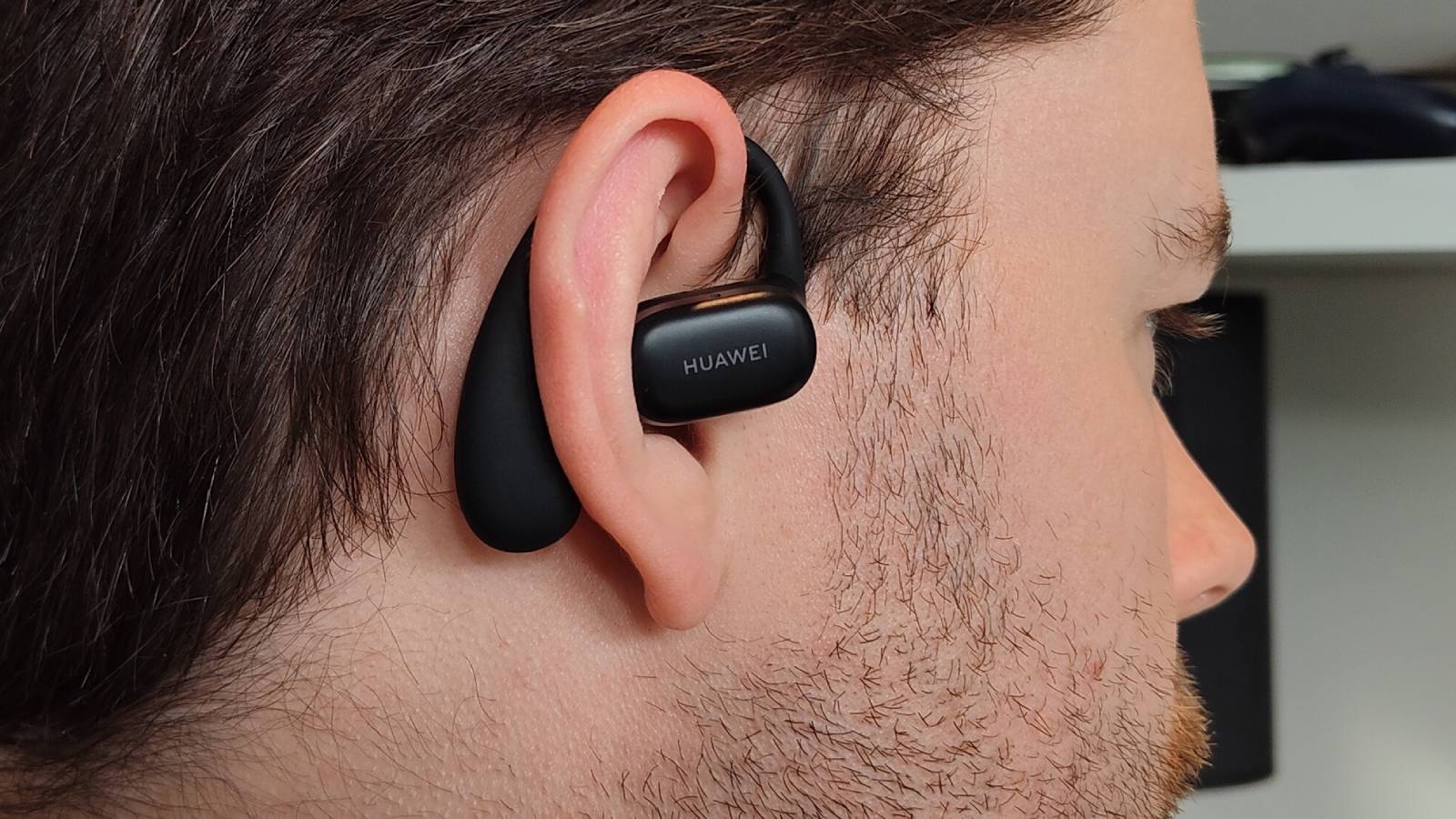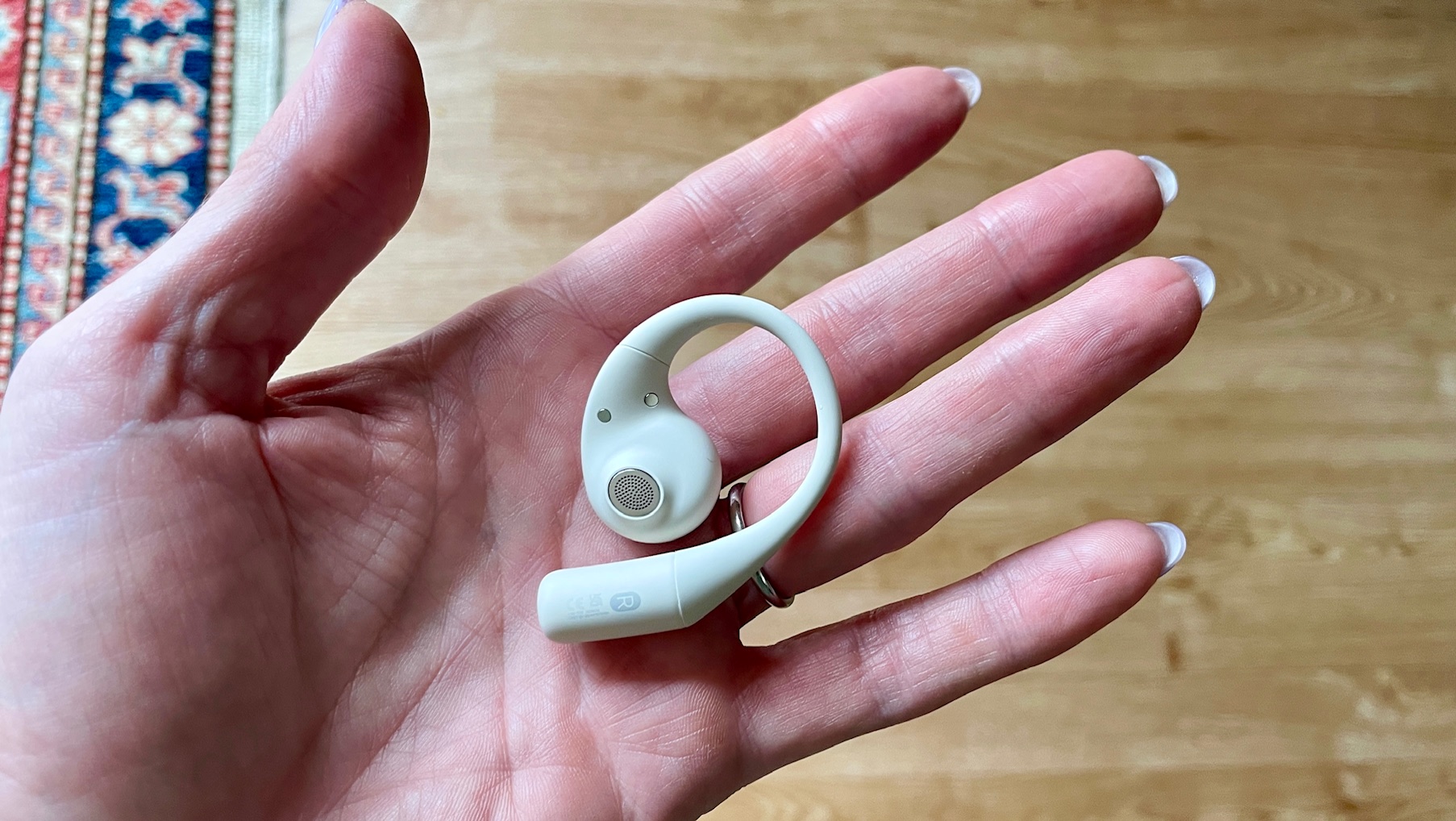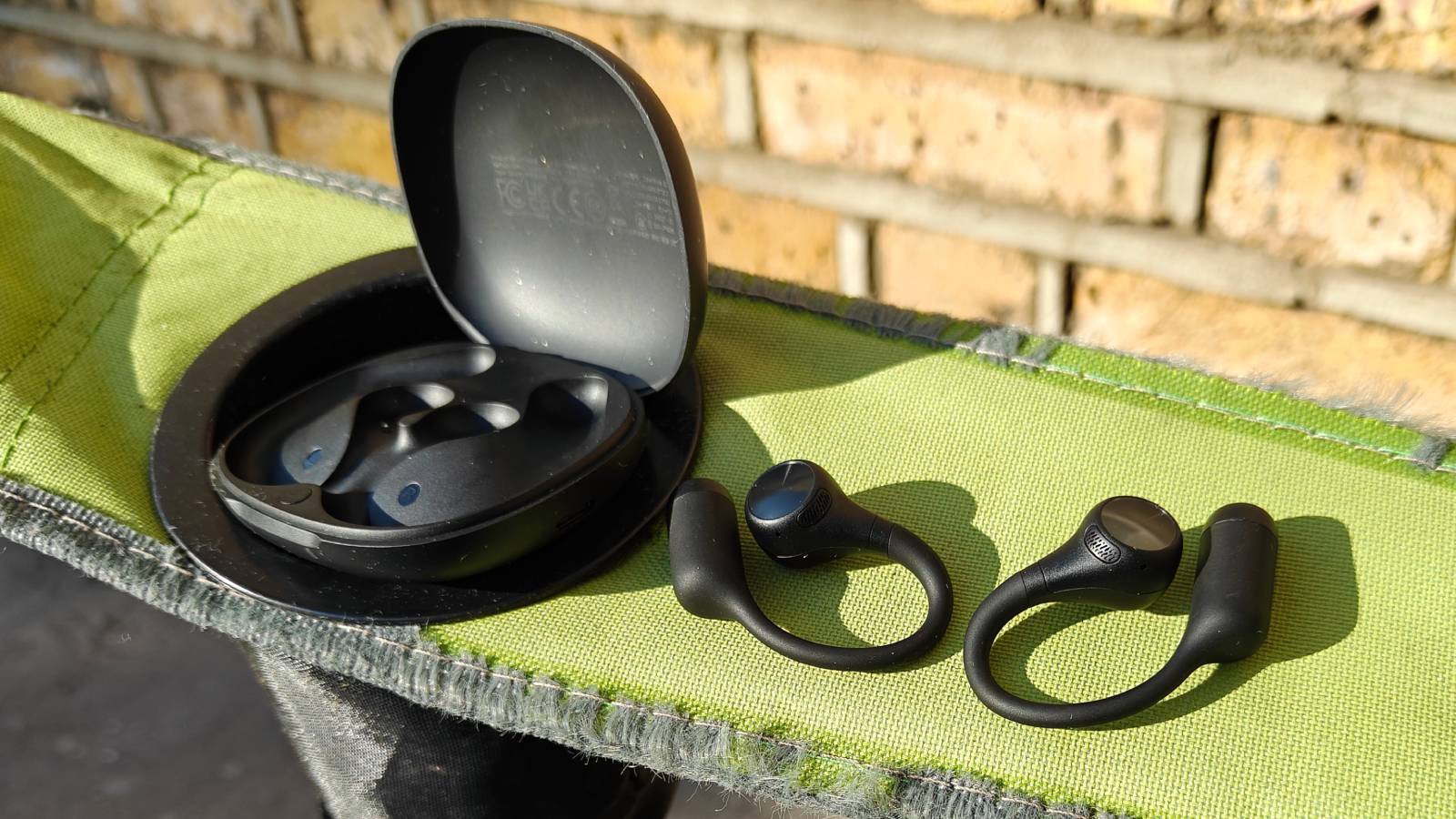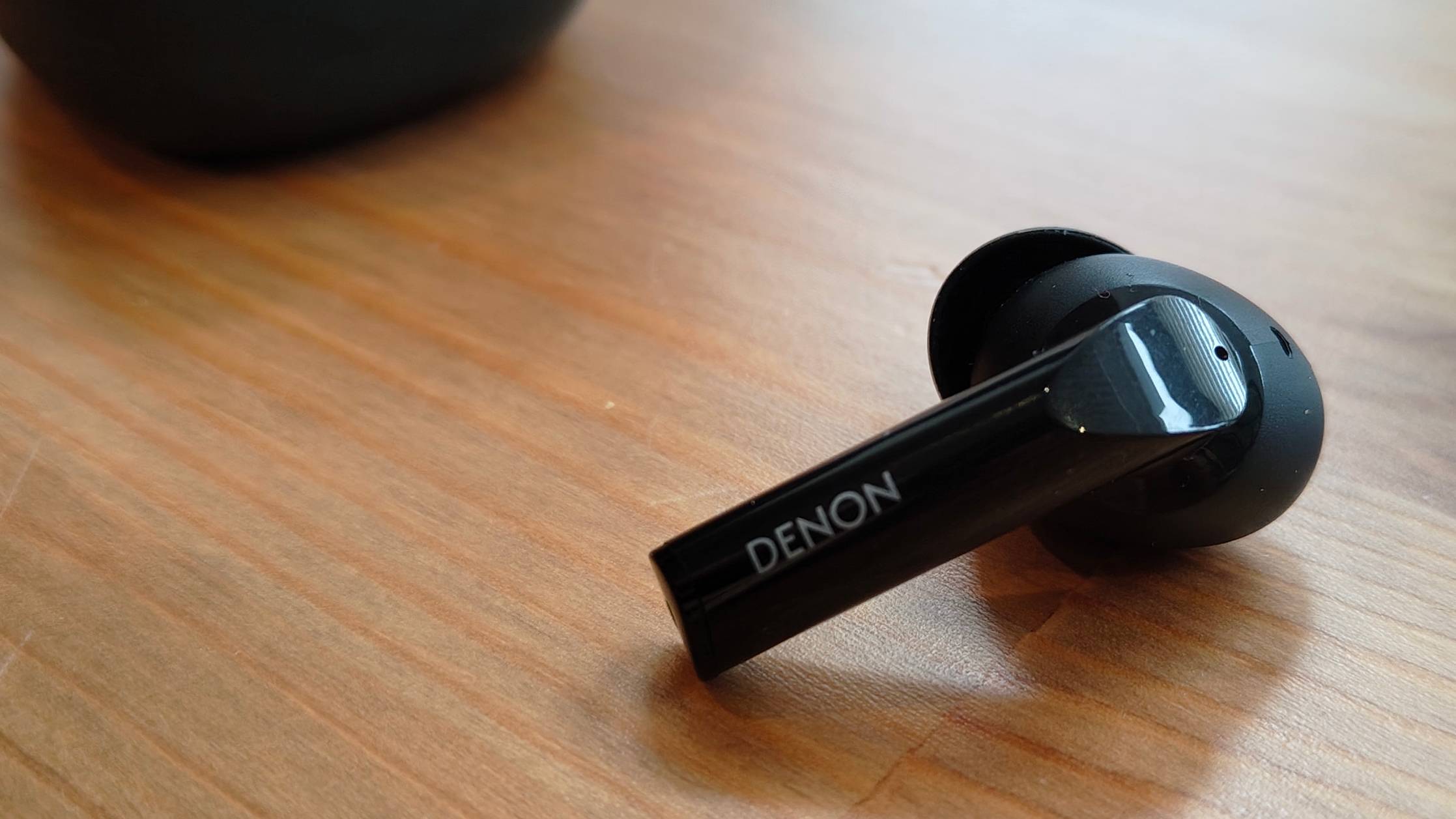It took 30 seconds of rain for me to realize: open earbuds are a genuine running essential
Wear but no tear

Despite having reviewed several members of our best open earbuds list, I’ve always had to confess behind the scenes (and, uh, in the introductions of many of said reviews) that these nuevo form-factor buds often aren’t for me.
However I’m ready to come out on record now and say I ‘get’ them – not because of any personal revelation or life-affirming discovery, but because one day when I was on a run the heavens opened. And to cut a long story short, everything changed.
One small (okay, pretty dramatic) change in the weather pushed me to remember how the best running headphones would fare in such weather situations, and I’m willing to evaluate open earbuds in a brand new light.
Closed on open-ears

Given that open earbuds are still a pretty novel kind of headphone, I probably ought to explain what they are. Essentially, they’re a kind of earbud designed so you can hear what’s going on around you, ensuring surrounding sounds aren’ drowned out by noise cancellation or your music.
Open earbuds use a sports loop to hold the earbud away from your ear slightly, usually using tech designed to beam the sound directly into your ear, and these two areas are where the issues arise.
Firstly, that sports loop. You can find these in basically every sports headphone – arguably it’s what makes them a sports headphone – as it’s a thin loop that goes around your ear, anchoring the bud when you’re jumping up and down on a run or at the gym. However it crucially works in sports buds alongside the ear tip, which creates a seal in your ear canal, and sans that, they can lack security. I’ve used loads of open-ears which move around quite a bit while you’re working out and it can affect the quality of your music (since the drivers are changing their proximity to your ears).
Second point: the drivers are at a distance from your ears. No matter what tech the manufacturer thinks up, the unavoidable problem here is that often the audio simply doesn’t sound as good when you’re hearing it from distance, and open earbuds typically sound so much worse than your average cheap headphones. Given that the ‘oomph’ of a well-chosen song can be the difference between getting a PB or not, this has long been the deciding feature that pushed me to say I would never buy this kind of bud for myself.
Sign up for breaking news, reviews, opinion, top tech deals, and more.
Rainy days

When I’m not testing open-ears, my go-to workout earbuds are some cheap things I bought on Amazon from an unknown brand. They offer a poor sonic balance but loads of bass, they have a fun bright orange color and, most importantly, the case has a built-in power indicator so if I use them after several weeks of another gadget, I know if they’ve got enough juice. And even more importantly, did I mention they were cheap?
About two weeks ago, after I’d finished testing the OneOdio OpenRock S2 and had no other open-ears to test, I returned to these orange buds (not made by Orange the telecoms company or Orange the amp-builder), and it turned out to be a fortuitous change.
I live in England and we’d been enjoying an unseasonably balmy summer; there were several heatwaves in the space of a few weeks, although the official criteria for a ‘heatwave’ is surprisingly cooler than you’d think. But as any runner will know, exercising in hot weather can be a chore, so I’d limited myself to shorter runs.
And then – could it be? – a break in days and days of sun! (And as soon as I’d booked an outdoor activity which requires sun, suspiciously). As soon as the heatwave ended I saw my opportunity, laced up my shoes and took to my local common with the orange buds. And conditions were initially perfect; from unrelenting sun a day earlier it was now overcast, even gloomy… is that rain?
After only running for a kilometer – I’d barely even reached the common I was meant to do laps around – I discovered that my well-thought-out lunch plan was actually incredibly poorly timed, because the heavens opened and it quickly became a torrent. Cue an incredibly soggy 5k run (I wasn’t going to stop running, but that was the minimum distance I could hit by doing a single lap of the park).
Wet run

If you’ve gone for a run in the rain, you’ve probably faced a long line of annoyances, but this article isn’t about chafing, raindrops cascading down your nose or how annoying wet hair is – it’s about headphones, and they don’t survive wet conditions well.
It’s not about how waterproof they are (most of the good ones should at least be IPX4 splash-proof these days) but about one small design feature: the tip, the bit that wedges the buds in your ear and seals out surrounding sounds. Because when you add moisture to the mix – and here I mean moisture in the form of ‘loads of rain’ – these tips become your worst nightmare.
Most running earbuds have tips made of silicone, which has loads of pros but can’t grip nearly as well on wet skin as on dry skin. So as soon as my orange buds because wet, they started sliding in and out of my ear.
The sports loop stopped the buds falling out completely, but any movement can be really annoying for runners. Firstly, the buds’ changed positions affects music quality, so every step affects the sound of the tunes you’re getting from the buds. But the most annoying is the suction effect, which can build up pressure or result in sounds akin to a toilet plunger when you’re running (because similar physics principles are at play).
Many earbuds have an eartip pressure hole but not all cheap ones, and even in premium ones I’ve used it’s not always enough – a quick web search just showed me people on Reddit discussing ‘hacks’ to poke sewing needles through silicon tips to reduce pressure (not something I’d personally do at home!).
This all adds up to one annoying fact: in-ear buds are really annoying to run with in the rain, especially if you’re using ones without a sports loop. The effects of rain on your in-ear earbuds are a run killer. But do you know what doesn’t suffer from this? Open designs, friend.
Second run

The weather didn’t let up and, more importantly, I like how refreshing running in the rain is. So a few days after that disastrous first run, wanting to get back out there, I laced up my shoes and set off again.
The one difference is something I’d been thinking since that first run, and I wanted to test on this run in case I could pitch an article to my TechRadar editor about it (which, if you’re reading this, was successful). Instead of my orange buds, I’d brought an open-ear headphone, namely the Huawei FreeArc (chosen because they sound rather good).
As soon as I started running, I could feel… no different. And that’s the point. The best earbuds are ones you don’t even notice, ones that just do their job without annoying irritations or infuriating problems, and the Huawei did just that.
I did several laps of my common without once having to reach up to readjust my buds, or wipe away beads of moisture that were causing the tips to become slippery. Before my run I turned off touch controls, aware of what rain can do to buds with sensitive on-ear touch functionality, but other than that I got the full earbud experience with none of the shortcomings.
My experience was so easy and refreshing that on rainy runs since then – well, the one rainy run I’ve done because summer’s back, baby! – I’ve stuck to open-ears. Features that can be annoying lots of the time are an amazing antidote when running, and I’m much warier about putting those orange buds in now, just in case of unexpected rainstorm.
I’m not sure I’d recommend open earbuds as the only pair of earbuds in a runners’ arsenal: noise cancellation and good sound quality are really nice features during fair weather, and I still use my orange buds in the gym for these reasons. But if you’re the kind of person who has backup pairs for certain situations (note TechRadar's audio editor Becky Scarrott, who reckons everyone should have five pairs of headphones), and you need headphones that’ll shrug off the rain with no problem, I can finally build a compelling case for open-ears.

Tom Bedford joined TechRadar in early 2019 as a staff writer, and left the team as deputy phones editor in late 2022 to work for entertainment site (and TR sister-site) What To Watch. He continues to contribute on a freelance basis for several sections including phones, audio and fitness.
You must confirm your public display name before commenting
Please logout and then login again, you will then be prompted to enter your display name.